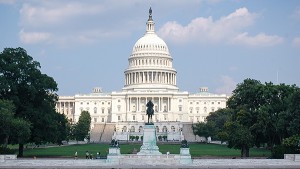January 20, 2017
 Every four years, citizens from coast to coast go to the polls to vote for the commander-in-chief. And as an example of a peaceful transfer of power, the soon-to-be former president works with the president-elect to ensure the continued success of the United States of America. This transition is made complete on Jan. 20 during the presidential inauguration.
Every four years, citizens from coast to coast go to the polls to vote for the commander-in-chief. And as an example of a peaceful transfer of power, the soon-to-be former president works with the president-elect to ensure the continued success of the United States of America. This transition is made complete on Jan. 20 during the presidential inauguration.
This position of President is considered the top job in the country—so let’s take a moment to learn a thing or two about onboarding the 45th President of the United States of America and apply it to your organization.
Smooth Transition
One of the most memorable presidential transitions in history was between the Clinton and Bush administrations in 2000. Infamously known as the “hanging-chad incident,” George W. Bush beat Vice President Al Gore in one of the closest elections in history. The transition was full of pranks from the out-going administration, including the removal of W keys from computer keyboards throughout the White House. In 2008, the transition of power was completely different. To ensure that the new President would be ready to handle a crisis on day one, President Bush had several meetings with then President-elect Barack Obama to ensure the office’s success, including terrorism exercises.
Most companies will not have the luxury of having as smooth a transition as the one President Obama experienced—and in many cases, there isn’t an employment overlap in which the exiting associate can train the incoming professional. But, that doesn’t mean you can’t mimic certain aspects of the presidential transition process. During this transfer of power, a transitional team is appointed to handle the logistics of the newly occupied position. In the same way, appoint a team who will be in charge of education, training, and introductions before you hire someone. Having a transition team in place with specific goals and agendas ensures a smooth transition when your company makes a new hire.
The First 100 Days
Originally coined by President Franklin D. Roosevelt referring to Congress, the first 100 days is now regarded as a critical measure of success for a new administration. During this time period, the President sets the tone for his first term in the Oval Office, usually sticking with plans laid out on the campaign trail. President-elect Donald Trump stated that he has plans to do just that, including bringing back jobs, appointing judges, and re-negotiating trade deals. The first few months of his term will be a benchmark for how the next four years will be analyzed.
Just like the first 100 days of a President’s tenure is imperative for setting the political tone of the nation, the first 90 days of a new employee’s service is important for starting off on the right foot. That’s why successful onboarding should be the major focus during this time. According to the Society of Human Resource Management (SHRM), “onboarding is the process by which new hires get adjusted to the social and performance aspects of their jobs quickly and smoothly, and learn the attitudes, knowledge, skills, and behaviors required to function effectively within an organization.” In other words, the new employee needs to have the tools necessary for performing the job, develop the skills needed to work effectively, and learn the company’s cultural attributes to ensure the right fit.
The Importance of the Transitional Period
In a Harvard Business Review survey, 70% of respondents agreed “success or failure during the transition period is a strong predictor of overall success or failure in the job.” Setting up your new employee for success sets up your company for success.
Regardless of political leanings, most people want the Office of the President to be successful, because if the President is successful, the country is successful.
With a focus on developing a transitional plan, creating a team to oversee a new hire, and administering an in-depth onboarding process, your organization has a better chance of ensuring the smooth transition of power—or at least smooth